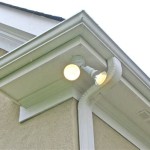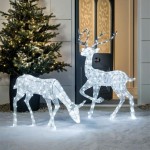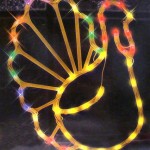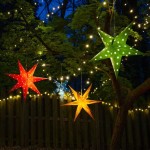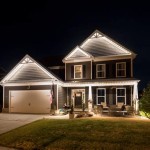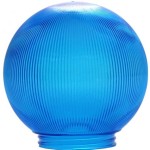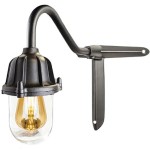Brass Vs. Aluminum Outdoor Lighting Fixtures: A Comprehensive Comparison
Outdoor lighting fixtures play a crucial role in enhancing the aesthetic appeal, security, and functionality of residential and commercial properties. Choosing the right material for these fixtures is essential for ensuring durability, longevity, and resistance to environmental factors. Brass and aluminum are two popular materials commonly used in the manufacturing of outdoor lighting fixtures. Each material possesses distinct characteristics that make it suitable for different applications and environments. This article provides a comprehensive comparison of brass and aluminum outdoor lighting fixtures, exploring their respective advantages and disadvantages, and offering insights to help informed decision-making.
Durability and Corrosion Resistance
One of the primary considerations when selecting outdoor lighting fixtures is their ability to withstand the elements. Both brass and aluminum offer good corrosion resistance, but they achieve this through different mechanisms. Brass, an alloy of copper and zinc, forms a protective layer known as patina over time, which shields the underlying metal from further corrosion. This patina, often characterized by a greenish or brownish hue, not only protects the brass but also contributes to its aesthetic appeal, often sought after for its vintage or antique look. The rate at which the patina forms depends on the environmental conditions, with more humid and salty environments accelerating the process.
Aluminum, on the other hand, forms a layer of aluminum oxide when exposed to air. This oxide layer is naturally occurring, extremely thin, and incredibly hard. Unlike rust on iron, aluminum oxide is highly resistant to corrosion and effectively prevents further degradation of the metal. The aluminum oxide layer is also self-repairing, meaning that if scratched or damaged, it will quickly reform, maintaining the metal's protection against the elements. The performance of aluminum in corrosive environments, particularly those near saltwater, is often enhanced through anodization, an electrochemical process that thickens the oxide layer, further improving its corrosion resistance. This makes anodized aluminum a robust choice for coastal properties.
While both materials are durable, the type of environment plays a significant role in determining which material is more suitable. In coastal areas with high salt concentrations, aluminum, especially anodized aluminum, generally performs better due to its inherent resistance to chloride corrosion. Brass can also be used in coastal environments, but it requires regular maintenance to prevent excessive corrosion under the patina layer. In environments with acid rain or industrial pollutants, both materials exhibit good resistance, but it's essential to consider the specific pollutants and their potential impact on each material's protective layer.
Aesthetic Appeal and Design Versatility
The aesthetic appeal of outdoor lighting fixtures is a crucial factor for many homeowners and businesses. Both brass and aluminum offer a range of design possibilities, but they differ in their inherent visual characteristics and finishing options. Brass, with its warm, golden hue, exudes a sense of elegance and sophistication. Its natural luster and ability to develop a rich patina make it a popular choice for traditional and classical architectural styles. Brass fixtures are often used to create a sense of timelessness and luxury, complementing natural materials like stone and wood.
Aluminum, in its raw form, presents a sleek, modern aesthetic, often favored for contemporary and minimalist designs. Its lighter color allows for a wider range of finishing options, including powder coating and painting. Powder coating involves applying a dry powder electrostatically to the aluminum surface and then curing it under heat, creating a durable and uniform finish in virtually any color. This process not only enhances the aesthetic appeal but also provides an additional layer of protection against corrosion. Aluminum fixtures can be easily customized to match specific color schemes and architectural styles, offering greater design flexibility.
The design versatility of aluminum is also enhanced by its malleability. It is easier to shape and form into complex designs compared to brass, allowing for more intricate and innovative lighting fixture designs. This can be particularly important for custom lighting solutions or projects that require unique and eye-catching fixtures.
Ultimately, the choice between brass and aluminum based on aesthetic appeal depends on the desired look and feel of the outdoor space. Brass lends itself well to traditional and elegant designs, while aluminum is more suitable for modern and contemporary styles. Consider the architectural style of the building, the surrounding landscape, and the overall design theme when making the decision.
Cost and Maintenance
The initial cost of outdoor lighting fixtures and the long-term maintenance requirements are important considerations for any lighting project. Brass fixtures generally tend to be more expensive than aluminum fixtures due to the higher cost of raw materials and the more complex manufacturing processes involved. The price difference can be significant, especially for larger projects requiring a substantial number of fixtures.
Aluminum, being more readily available and easier to process, offers a more cost-effective alternative. The lighter weight of aluminum also contributes to lower shipping and installation costs. However, the specific cost difference between brass and aluminum fixtures depends on several factors, including the design complexity, the finish applied, and the manufacturer.
In terms of maintenance, both brass and aluminum require some degree of upkeep to maintain their appearance and performance. Brass fixtures, while developing a protective patina, may require occasional cleaning to remove dirt and grime that can accumulate on the surface. If a polished brass finish is desired, regular polishing is necessary to prevent the formation of patina. The frequency of cleaning and polishing depends on the environmental conditions and the desired aesthetic.
Aluminum fixtures, particularly those with a powder-coated finish, generally require less maintenance than brass. The powder coating provides a durable and scratch-resistant surface that is easy to clean with mild soap and water. Anodized aluminum also requires minimal maintenance, as the oxide layer is self-repairing. However, in harsh environments, it's important to inspect aluminum fixtures periodically for signs of corrosion or damage to the protective coating.
The long-term cost of ownership should be considered when comparing brass and aluminum fixtures. While brass fixtures may have a higher initial cost, their inherent durability and resistance to corrosion can result in lower maintenance costs over time. Aluminum fixtures, on the other hand, may have a lower initial cost but may require more frequent maintenance or replacement in certain environments.
Another cost factor to consider is the weight of the material. Aluminum is significantly lighter than brass, which can make a difference for large installations or in situations where structural support is a concern. The lighter weight can also translate to reduced labor costs during installation.
In summary, the choice between brass and aluminum for outdoor lighting fixtures involves a careful consideration of durability, aesthetic appeal, cost, and maintenance requirements. Both materials offer advantages and disadvantages, and the optimal choice depends on the specific application, environmental conditions, and budget. Evaluate each material's properties and characteristics in relation to the project requirements to make an informed decision that balances performance, aesthetics, and cost-effectiveness.

Outdoor Lighting Guide Delmarfans Com

Outdoor Lighting Guide Delmarfans Com

The Prettiest Outdoor Lighting Fixtures At Home With Ashley

Kichler Camillo 1 Light Textured Black And Brass Aluminum Hardwired Waterproof Outdoor Post With Integrated Led Pack 59142bkt The Home Depot

Outdoor Lighting Guide Delmarfans Com

Wall Mount E27 Corded Antique Lamp Brass Lantern Porch Light Fixture Outdoor Garden Brown

Gardencoin Speaker Solid Brass Outdoor Landscape Spotlights 12v Heavy Duty Low Voltage Spot Light Waterproof For Garden And Yard Up Lighting Broe

Crested E 1 Light 23 Inch Vintage Brass Outdoor Post

Kichler Camillo 1 Light Textured Black And Brass Aluminum Hardwired Waterproof Outdoor Post With Integrated Led Pack 59142bkt The Home Depot

Wall Lights Gdae10 Aluminum Lamp Retro Pavilion Palace Outdoor Sconces Antique Lighting Fixture For Home Patio Garden Vintage 3w Without Plug E27 Bulb
